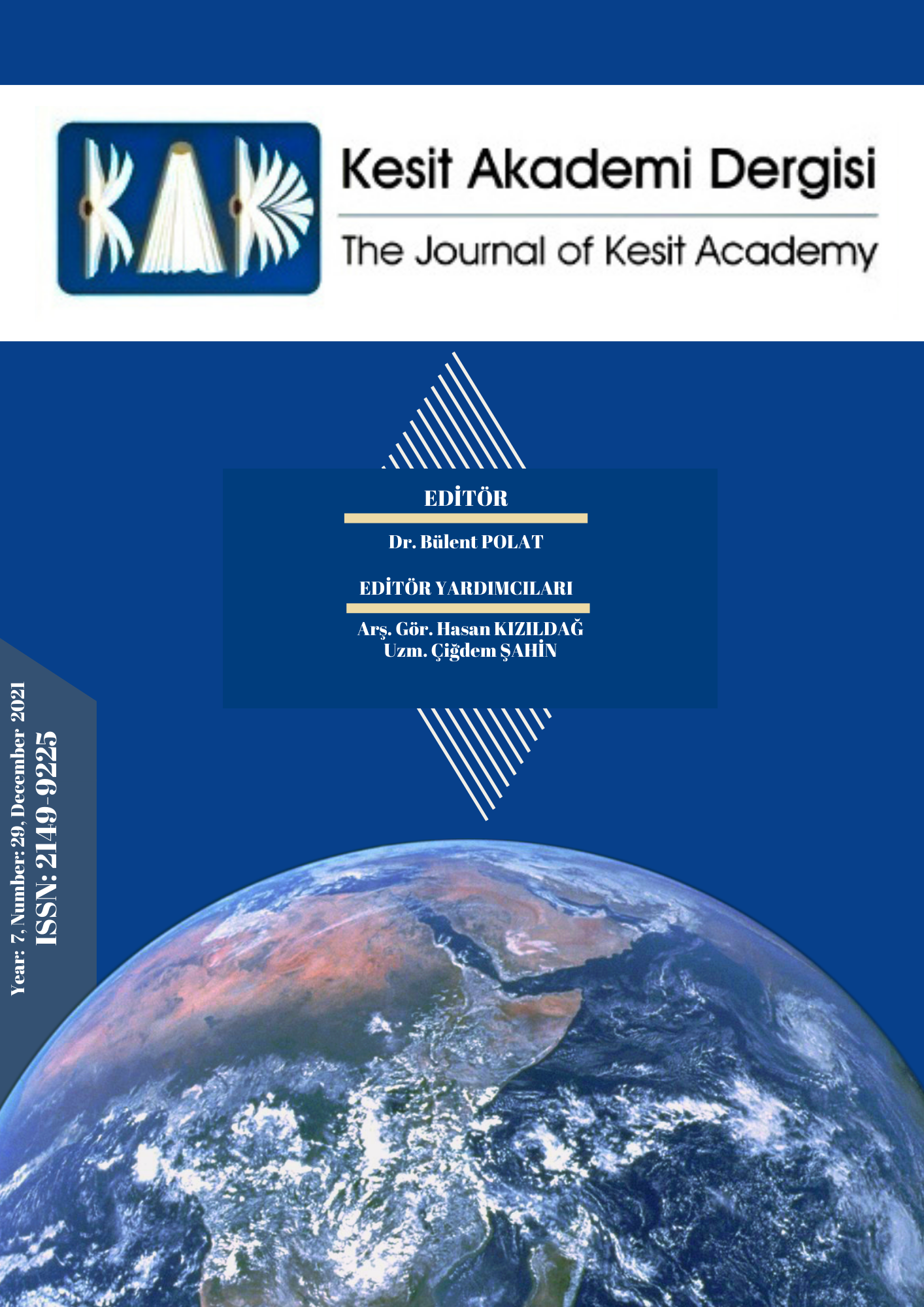Author :
Abstract
Bir hacim sanatı olan heykel çevresinde gördüğü dünyayı, dünyadaki nesnellik ile anlatmaya çalışır. Mekân içinde üç boyutlu estetik biçimler yaratmayı amaçlar. Değişik açılardan bakıldığında farklı görünümler verir. Mekân-biçim ve form sanatsal kaygılar ile bir araya getirilir. Heykel sanatçısı, duygu ve düşüncelerini formlarla hissettirir. Form kelimesi, hacimli olan bütün biçimleri kapsar. Formun algılanmasında ışık-gölge ana esaslardan biridir. Biçimlerde ışık gölgenin dengeli dağılımı, yapılan çalışmanın bulunduğu mekânla kaynaşmasını kolaylaştırır. Formlar arasında bütünlüğün sağlanması, kompozisyonda büyük önem taşır. Kompozisyon, yüzey dokularının, şekil ve boyutların uyumlu olmasıdır. Kompozisyon oluşumunda pek çok etken yer almaktadır. Kompozisyonda dengeyi sağlayan unsurlar olan bu etkenler doğru kullanıldığı takdirde gerçek sanat eserleri oluşmaktadır. Yüzey, ritim, denge, oran -orantı, biçim, şekil gibi kavramlar formu ve kompozisyonu destekleyen diğer unsurlardır.
Keywords
Abstract
As an art of volume, sculpturing tries to express the world around itself through the objectivism in the world. It tries to create 3D (three-dimensional) aesthetical images in the site. It gives various images from various perspectives. Site-image and form are compounded with artistic concerns. Artist of sculpture makes his opinions and senses felt by the forms. The word ‘form’ includes all images having any volume. In the perception of form, light-shadow is one of the main principles. A balanced distribution of light – shadow helps the integration of the work with the site. Composition is also of great importance in order to secure the integrity among forms. Composition is the harmony of textures, shapes and dimensions of the surface. There are various factors forming the composition. As being balancing elements of composition, these factors help creating a real art work if they used properly. Surface, rhythm, balance, ratio-rate, style, shape etc. concepts are among oh6r7rthers supporting form and composition.
Keywords
- Alparslan, A. S. (1981). Tasarım meslekî resim. İstanbul
- Alparslan, A. S. (1981). Tasarım meslekî resim. İstanbul
- Altıntaş, O. ( 2007). Sanat eğitimi ve çağdaş Türk resminde nü. Sur Yayınları. Atalayer, F. (1994). Temel sanat öğeleri. Anadolu Üniversitesi.
- Aygün, Ö. (2002). Giacometti’nin yontuları. Sanat Dünyamız Dergisi, 82, 123-132. Eczacıbaşı sanat ansiklopedisi. (1997). Cilt 2. İstanbul.
- Baraski, C. (1964). Heykel hakkında genel bilgiler. Bükreş.
- Bulat, M. (2007). Modern heykelin doğuşu. Sanat Dergisi, XI, 83-89.Bulat, M. (2007). Form ve kompozisyon. Sanat Dergisi, XII, 73-78.Bulat, M. Babyev, G. ve Bulat, S. (2004). Heykel atölye. İstanbul.
- Bulat, M. (1997). Antik çağ Hellen-Roma sanatında yontu ve kopya teknikleri [Yayınlanma- mış doktora tezi]. Atatürk Üniversitesi.
- Gombrich, E. ( 1986 ). Sanatın öyküsü. Remzi Kitabevi.
- Gökaydın, N. (2002). Temel sanat eğitimi. Milli Eğitim Bakanlığı Yayınları. Güvemli, Z. (1982). Sanat tarihi. Varlık Yayınları.
- Huntürk, U. (1996). Heykel sanatı. İmge Kitabevi.
- Kınay, C. (1977). Sanat tarihi. Kültür Bakanlığı Yayınları.
- Kortan, E. (1982). Heykel mi mimari mi?. Yeni Boyut Plastik Sanatlar Dergisi, 1 (5), 16.Lynton, N. ( 1982). Modern sanatın öyküsü (Çev.: C. Çapan, S. Öziş). Remzi Kitabevi.--------------. (1991). Modern sanatın öyküsü (Çev.: C. Çapan, S. Öziş). Remzi Kitabevi.
- Read, H. ( 1960). Sanatın anlamı (Çev.: G. İnal, N. Asgari). Türkiye İş Bankası Yayınları. Rosalınd, K. (2002). Mekana yayılan heykel. Sanat Dünyamız Dergisi, 82, 103-110.
- Sözen, M. ve Tanyeli, U. (1994). Sanat kavram ve terimleri sözlüğü. Remzi Kitabevi. Savaş, R. (1975). Modelaj. Yaygın Öğretim Kurumu Yayınları.
- Şeref, B. (1984). Resim sanatı. Şafak Matbaası.
- Turani, A. (1980). Sanat terimleri sözlüğü (4. Baskı). Toplum Yayınevi. Turani, A. (1983). Dünya sanat tarihi. İş Bankası Kültür Yayınları
- Turani, A. (1974). Çağdaş sanat felsefesi. Remzi Kitabevi.
- Yılmaz, S. (2000). Resimde geometri ilişkisi [Yayınlanmamış Lisans Tezi]. Isparta Süleyman Demirel Üniversitesi.





